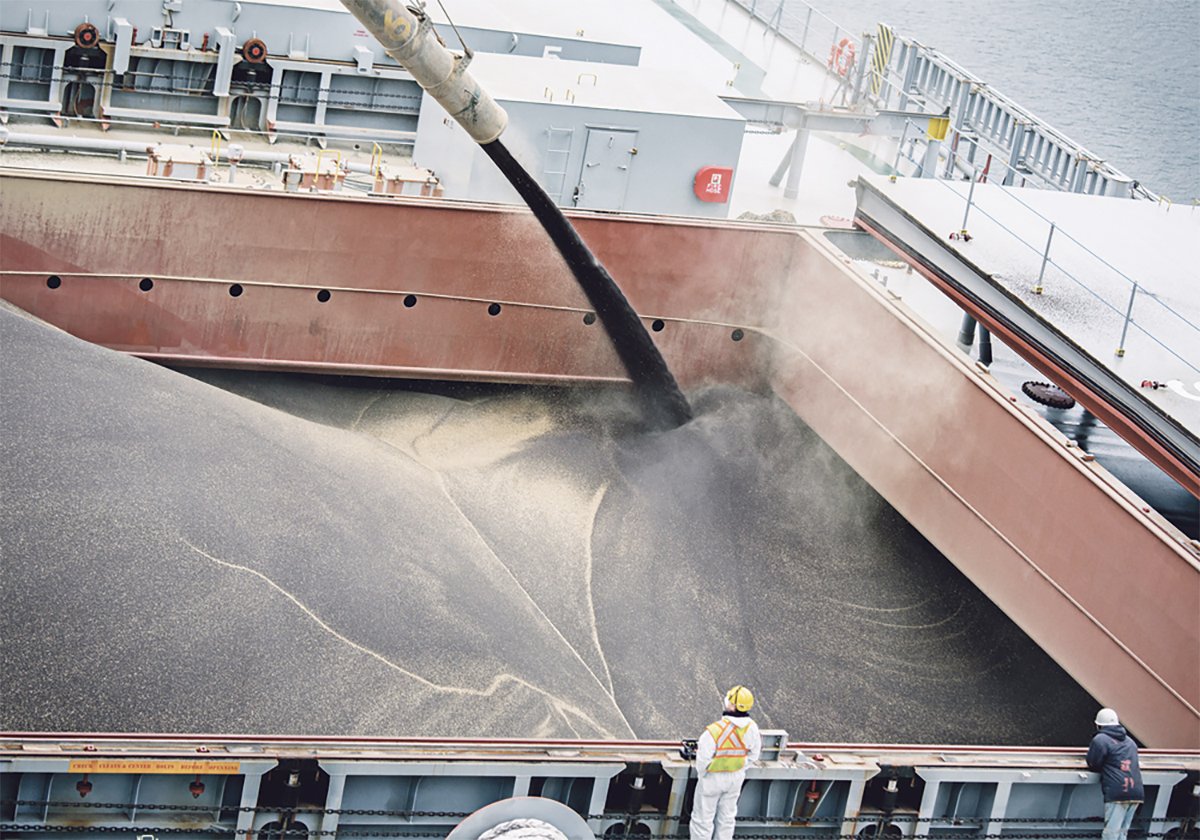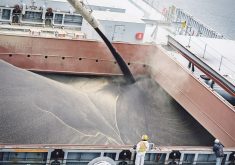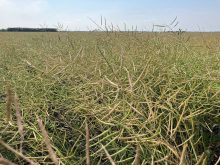The drop in oilseed prices following the release of the U.S. Department of Agriculture acreage report is not simply a short-term reaction, says a Calgary analyst.
Errol Anderson of Pro Market Communications expects this is part of a larger market-wide correction.
“The markets are going to lose 30 to 40 percent of their value,” said Anderson March 31, after the release of the USDA report. “It (the market) is just exhaling from the overbought condition.”
The standout item in the USDA acreage report was the increase in soybean acres relative to corn.
Read Also

Exports off to a slow start after last year’s torrid pace
Canadian grain, oilseed and pulse exports are off to a slow start, but there are some bright spots, according to the Canadian Grain Commission’s most recent weekly export data report.
The news hammered the entire oil complex March 31, including canola, which dropped the $45 per tonne limit in almost all contract months.
He expects canola to trade near $10 to $12 a bushel in the next few months,
“Which is still a heck of a price,” he said. “It’s not $18 … (but) it could rebound up to $14, possibly.”
Mike Jubinville, a Winnipeg market analyst, is not nearly as definitive in his long-term predictions, because market logic has left the building.
“This is volatility like we have never seen in the history of canola or oilseed trade,” said Jubinville of ProFarmer Canada. “This thing is a wild roller-coaster and we are going to see crazy up days, followed by crazy down days. Predictability is out of this market.”
Jubinville agrees with Anderson that we’ve now moved into the next stage of the market where weather news dominates. He expected that will be a bigger issue than acreage numbers because small changes in yield have a larger impact on production.
There was good news for Canadian oat producers in the USDA report. U.S. oat acres are expected to drop to the lowest level on record – 3.42 million acres, down nine percent from last year’s 3.76 million acres.
“I think the oat demand, particularly from the Minneapolis market, will be excellent in the fall,” Anderson said.
Jubinville is not convinced that fewer U.S. oat acres will encourage Canadian farmers to seed more oats.
“When you do the gross margin analysis of cost of production relative to new crop pricing opportunities … oats doesn’t stand out head and shoulders above other cropping options,” he said.
U.S. barley acres are expected to increase slightly from 2007, up three percent to 4.15 million acres, but still low from a historic perspective. If these acres hold, it will be the fourth lowest U.S. barley acreage.
Anderson is bullish on malting barley because strong demand will support prices, but demand for feed barley is weaker because “placements (into feedlots) are down sharply.”
For Jubinville, the biggest story in the USDA report is the battle between soybeans and corn for acreage. It’s a battle that is far from over, he said.
“If you take a soybean-corn price ratio and it is screaming, absolutely screaming to the American farmer to grow corn,” he said.

















